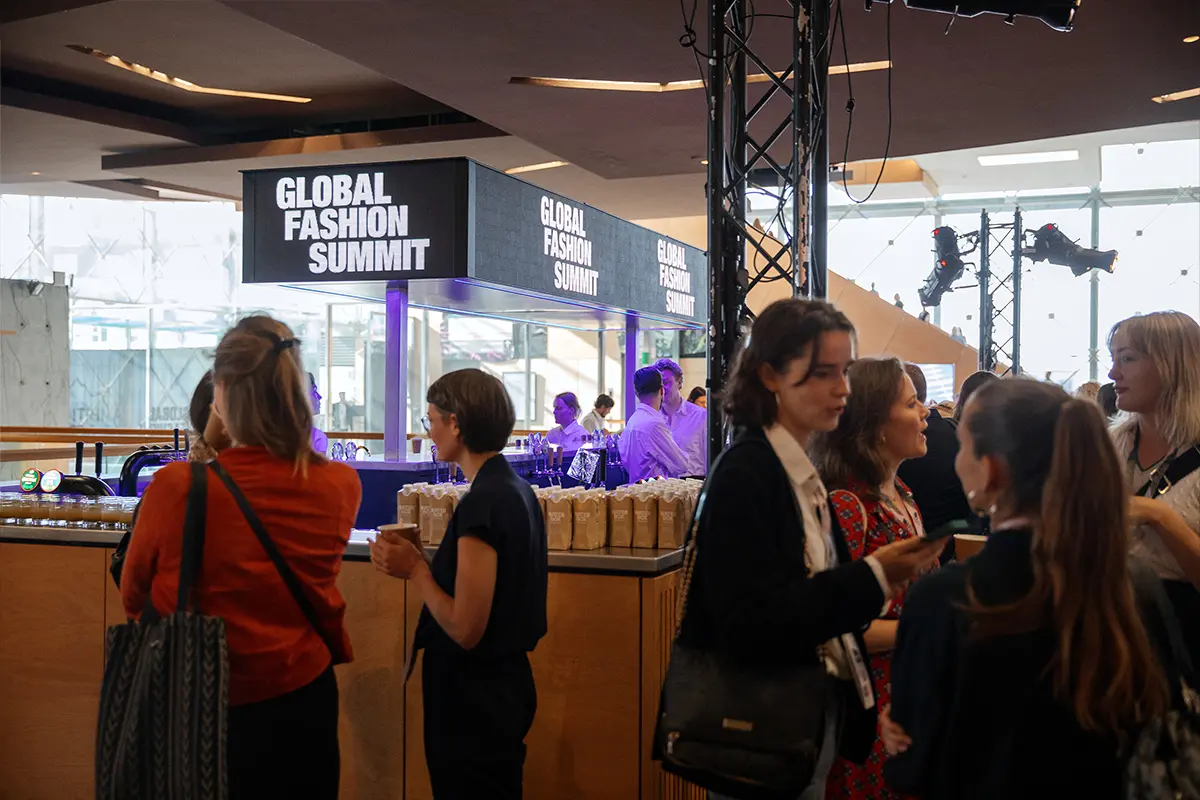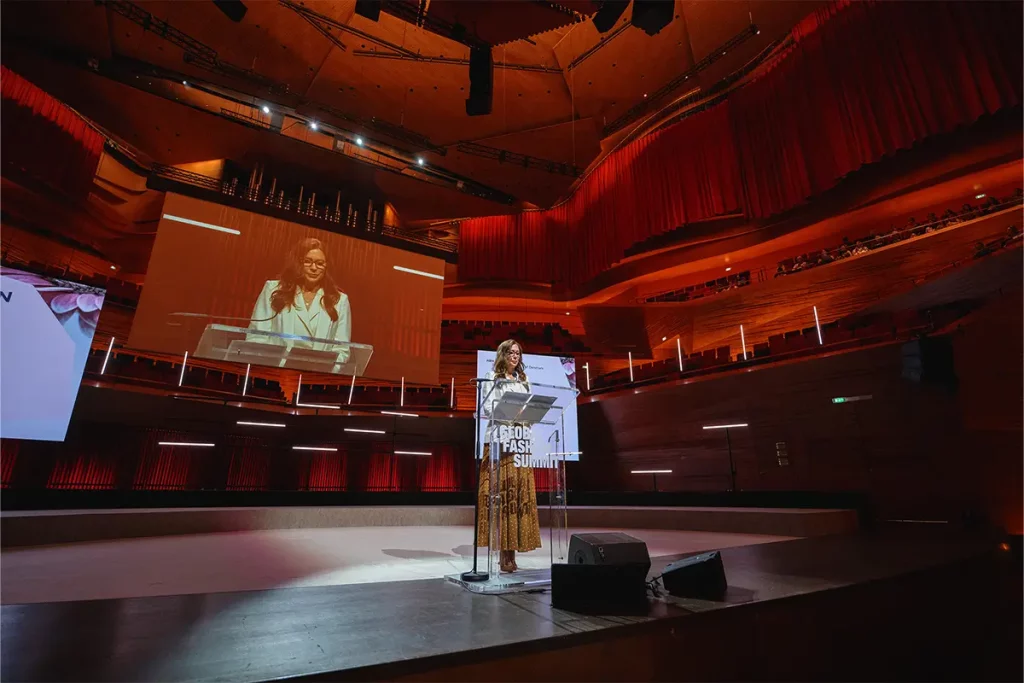The case of stop in production of Mylo, an alternative and ethical material created by Bolt Threads has created a stir: why does fashion still put little effort?
Mylo ceased production: the poor effort fashion is putting in sustainability
In the past few days, Bolt Threads, a materials innovation startup, announced that it has ceased production of Mylo. Defined as an alternative to leather created from mycelium, this material had been employed by major companies such as Stella McCartney, Kering, and Adidas.
Despite the manufacturer’s efforts, financial support was mainly lacking, which prevented it from reaching commercial scale. «We’re not immune to the same macroeconomic pressures that everyone else is facing, so we’ve paused Mylo to reevaluate what’s working and what will work in the future», Dan Widmaier, CEO of Bolt Threads, tells Vogue Business.
The solution the company is seeking may also lie in selling the technology they own. The issue of making an ethically produced fabric like Mylo available is making the CEO consider all possible options, he concludes in the interview with Vogue Business.
Mylo – scalability in the industry: no action by high end brands
Although the field of alternative materials to those of animal origin has been very successful, the difficulty in funding continued research is clear. In addition, bringing these types of products, often designed by startups, to the commercial market and ensuring their scalability seems like a mirage.
The interest and adoption by well-known luxury brands of these alternative materials has not been enough. Mylo was slowly approaching scalability, Widmaier said, thanks in part to early adopter Stella McCartney. Several collaborations have followed, including with the goal of promoting the product switch from lab to market introduction.
The need to achieve scalability and a change of course, played a major role in Mylo’s discontinuation. For the time being, a partnership with the cellular programming platform Ginkgo Bioworks is in place. This could potentially grow Mylo’s production while reducing production costs.
Global Fashion Summit 2023: no more abstract goals
Wishing for more regulation of the system, the Global Fashion Summit 2023 presented Ambition to Action as the theme of the year. Last June several industry representatives including brands, retailers, NGOs, policy, manufacturers, and innovators gathered in Copenhagen. Presented by Global Fashion Agenda, a nonprofit association that aims to drive a change in the sector, the Summit addressed successful case studies.
Projects that have succeeded in changing the status quo in the fashion world served as a basis for proposing new concrete actions with evidence-based impact to be developed for the future.
«This year we focused on turning the aspirational to the actual championing evidence-based actions that can redesign our business models with net positive at the core, improve the livelihoods of the millions of garment workers and protect and enhance our precious ecosystems», Federica Marchionni, CEO, Global Fashion Agenda, points out.
Priorities discussed at Global Fashion Summit 2023
Part of the issues addressed during the Global Fashion Summit relate to the Fashion CEO Agenda. This is a kind of guide to provide companies with highlights to work on in terms of sustainability and ensuring the company’s future. What is highlighted with respect to this is the necessary coexistence between attention to the environment and the people working in the industry.
Studying together with some industry leaders the main points, the Fashion CEO Agenda aims to start with consideration for workers and human beings. Some of the pillars highlighted in the development of the strategy are Smart Material Choices, Circular Systems, Respectful and Secure Work Environments.
Sixty million people work in the fashion sector today, and the unsustainability of the industry comes through their conditions. Wages below the cost of living, unsafe working environment and hazardous conditions are the foundations for an unhealthy system.
A need of action by politics: Global Textiles Policy Forum
The Global Textiles Policy Forum is introduced in the Global Fashion Summit by highlighting the need to reshape supply chains. Indeed, rethinking the EU’s textile strategy cannot redeem itself from reflecting on a global scale, considering the extensive network of stakeholders involved by companies operating in the area.
The need for global unification of the textile strategy also draws on the UNEP report Sustainability and Circularity in the Textile Value Chain – A global roadmap. To address the report’s three priorities: shifting consumption patterns, improved practices, and infrastructure investment, the forum included a series of panel discussions and roundtables.
A meeting between different stakeholders to agree on a concrete strategy starting with KPIs and governance. Starting precisely with the involvement of supply chain actors to drive this development to then be able to spread the impact of the EU Textile Strategy outside.
«GFA also launched a new policy matrix to summarize the key legislations going on around the world implicating the textiles industry», they explain. Among the participants: United Nations Environment Programme’s (UNEP), China National Textile and Apparel Council (CNTAC), the European Apparel and Textile Confederation (EURATEX), the International Apparel Federation (IAF), the Sustainable Textile of the Asian Region (STAR) and the European Fashion Alliance (EFA).
Communications shapes behaviors: The Sustainable Fashion Communication Playbook
One of the topics that the Global Fashion Summit focused on is brand communication, which is decisive to educating consumers. For this occasion, UNEP and the United Nations for Climate Change published the Sustainable Fashion Communication Playbook. The goal is to align what are sustainability objectives in the industry with the global communication of fashion brands.
The professionals asked are varied from media to influencers to brand managers and marketers. Instead, the topics addressed start right from the fight against misinformation on this subject. They then continued towards the possibility of orienting to more sustainable lifestyles along with the reduction of consumerist messages which are usually promoted.
A final point, on the other hand, focuses on the active role of the consumer as a citizen and the need for this to require greater involvement on the part of business and politics. The Playbook emphasizes the role of communicators in acting toward change in the industry.
As promoters of this sector evolution, they must, according to the document, first and foremost discourage the linear economic model on which fashion is based. Along with this also deter the turning to constant novelty perpetuating a one-time disposable model among consumers.
The Innovation Forum: a concrete workshop against abstract goals
The forum is not only a time for theoretical sharing, but since 2018 it has been offering the Innovation Forum. A series of concrete solutions in the apparel industry are selected to be presented to participants. Fashion brands and retailers are then in contact with those who can provide a transformational opportunity within their supply chain.
Infinited Fiber Company, Desserto and Algaeing
Based on pre-screening through a matchmaking program, companies are matched with the needs of brands. More than 350 facilitated business meetings took place during the Summit between fashion companies and sustainable solutions providers, they explain.
Among the companies involved were Desserto, producer of vegan leather from cactus, or Algaeing, which converts algae into biofibers and eco-friendly dyes. Or Infinited Fiber Company’s technology that transforms cellulose-rich materials, such as old garments, used cardboard or rice straw, into the biodegradable fiber Infinna™.
Highlighting the need of circularity at the Global Fashion Summit
This edition of the Global Fashion Summit in Copenhagen featured a focus on circularity. The CTI Fashion Initiative unveiled a new collaboration with World Business Council for Sustainable Development (WBCSD), from VF, the VF Foundation and Deloitte Switzerland among others as players.
Promoting circularity in the fashion world means first and foremost to establish harmonized standards, metrics, data and best practices to scale up a circular economy throughout the value chain, highlights the WBCSD. The Circular Transition Indicators (CTI) from which the assessment starts is a system of globally recognized metrics.
«Research shows that circular textile use and recycling can reduce land use by 40 percent globally and substantially decrease the industry’s carbon footprint», WBCSD points out. In addition to the benefits to the planet and people, this transformation would represent a $560 billion economic opportunity, they conclude.
Global Fashion Summit
Global Fashion Summit is conceived and organized by Global Fashion Agenda and is the leading international forum for sustainability in fashion. The Summit has reached its fourteenth edition and is based in Denmark’s capital, Copenhagen.
Mylo
Mylo is a sustainable leather alternative made from mycelium, the root-like system of mushrooms. As a material, Mylo delivers the timeless aesthetic and luxurious feel of leather, but without the planetary impact associated with raising livestock. While cows require extensive resources and years to raise, the mycelium used to make Mylo is grown in less than two weeks inside a state-of-the-art vertical farming facility powered by 100 percent renewable electricity.




















